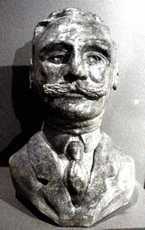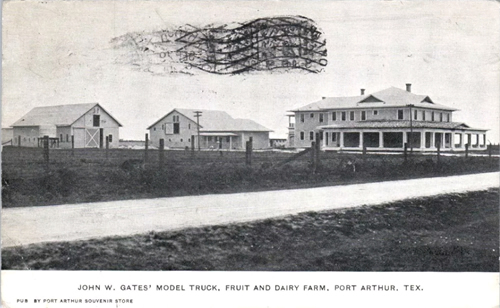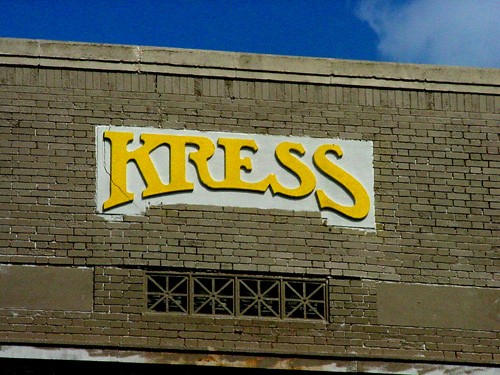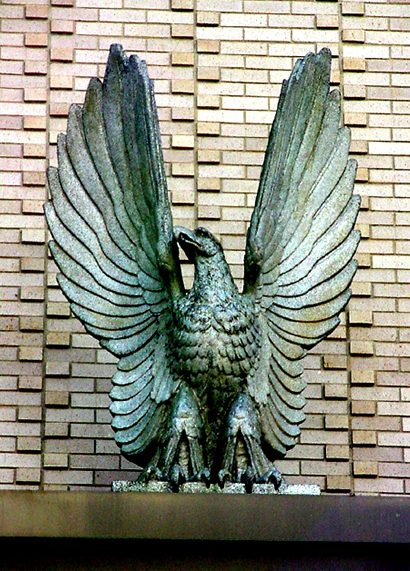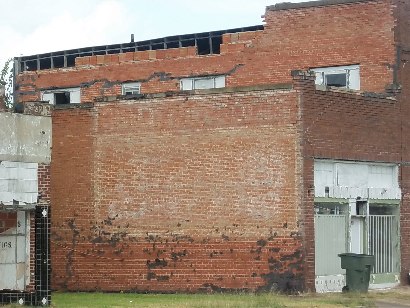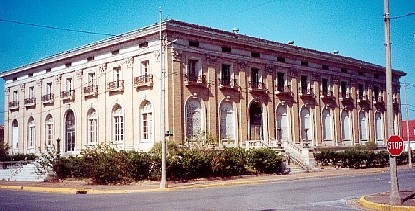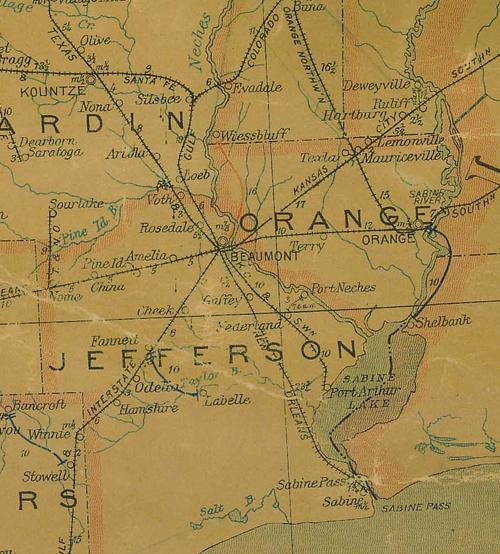Port Arthur, Texas, Jefferson County. (original) (raw)
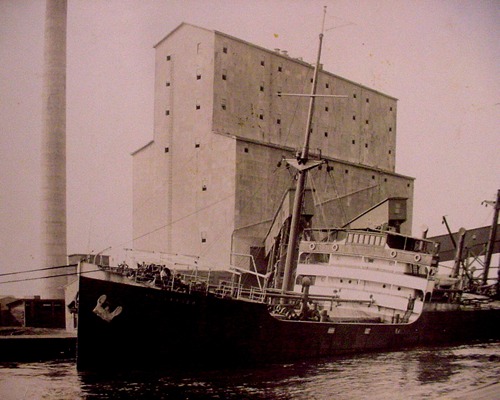
Grain elevator and ship at the port
Photo courtesy Museum of the Gulf Coast

History in a 55-Gallon DrumArthur Edward Stilwell was born in Rochester, New York in 1859. As a teenager he ran away from home to "seek his fortune." His gentile upbringing endeared him to the movers and shakers of the period and they shared their knowledge with the young man. By 1886, he had gone from traveling salesman to belt-line railroad promoter. His first major project was a railway from Kansas City to Sabine Pass, Texas, but Stilwell got sidetracked in Port Arthur.
In December of 1895 Stilwell and Co. acquired property in Jefferson County and began platting a city, which he modestly named after himself.
The Kansas City, Pittsburg and Gulf Railroad (which later became the Kansas City Southern) arrived in Port Arthur in 1897. Late that year Port Arthur had nearly 1,000 residents. To become a seaport, Port Arthur needed a canal, so in April 1897 the Port Arthur Channel and Dock Company began dredging a canal to the to deep water at Sabine Pass (completed in 1899). Stilwell�s railroad went bankrupt in 1899 and he lost interest in his dream.
In 1900 Stilwell announced an even more ambitious project: to connect Kansas City to the Pacific Coast (through Mexico). He founded Port Stilwell in the state of Sinaloa, Mexico. After bankruptcy and another quest for a Pacific railroad connection, Stilwell turned to writing books on finance. He then turned to poetry and novels. In his stories he let it be known that his Port Arthur dreams had been advice from "brownies."
Historical Marker: 1300 Proctor St., Port Arthur
Arthur Edward Stilwell
Son of Charles H. and Mary Stilwell, was born on October 21, 1859, in Rochester, New York. Young Arthur was greatly influenced by his grandfather, railroad builder Hamlin Stilwell, and according to family tradition vowed to be a railroad builder himself one day.
He married Virginian Jennie A. Wood in 1879 and after many business successes set his sights on building a railroad system from the farming region of the midwestern U.S. to the Texas Gulf Coast. Stilwell established the town of Port Arthur here on 4,000 acres in 1895. He later extended the Kansas City, Pittsburg, and Gulf Railroad from Shreveport south through western Louisiana to its terminus at Port Arthur. To promote settlement of the area Stilwell established a successful experimental farm, drilled water wells, and built a hotel, indoor swimming pool, and pleasure pier.
In 1897 Port Arthur contained about 1,100 inhabitants. By 1900 Stilwell had completed a canal from Mesquite Point (7 miles south at Sabine Pass) to substantial port facilities at Port Arthur. By fulfilling a childhood dream Arthur Stilwell not only founded the town of Port Arthur but in large measure laid the foundation for its future prosperity. Stilwell died on September 26, 1928, and was cremated.
Sesquicentennial of Texas Statehood 1845 - 1995
Bust of Arthur Stilwell
Photo Courtesy Museum of the Gulf Coast
John W. Gates' model truck, fruit and dairy farm
Click on image to enlarge
Old Photo courtesy Dan Whatley Collection
Stilwell was replaced by John W. (Bet-a Million) Gates, a man who had made a fortune in barbed wire and who didn�t believe in brownies. Gates arrived in December 1899 just as Stilwell was leaving. Gates didn�t live too many years longer and in 1918, Gates Memorial Library, was established by his widow as a memorial to her husband (and her son).
Port Arthur became a port of entry in 1906 and two years later the canal was extended up the Neches River to Beaumont and Orange.
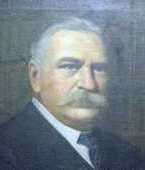
Protrait of John Gates in the Gates Memorial Library
Photo Courtesy Gates Memorial Library
Historical Marker: 317 Stilwell Blvd., Port Arthur
Gates Memorial Library
John Warne "Bet a Million" Gates (1855-1911), a native of Illinois, was instrumental in the early growth of Port Arthur. A prominent businessman and financier noted for his promotion of barbed wire, he became a leader in the development of the city founded by Arthur Stilwell, the president of the Kansas City Southern Railroad. Gates was initially attracted to the Port Arthur area by the local oil boom of the early 1900s. As an investor, he figured prominently in the development of the Texas Company, now Texaco. Later a resident of New York, Gates maintained his business and philanthropic interests in Port Arthur with the help of his son Charles. Gate's contributions to the city include Port Arthur Business College, St. Mary's Hospital, and the Plaza Hotel. In 1909 John Gates set aside land at this site for a public library, but initial plans for the project were discontinued after his death in 1911. Planning resumed five years later when it became apparent the public library in the nearby high school could not adequately serve the city. Through the efforts of Gate's widow Dellora (1855- 1918) and local residents, this library was completed in 1917. The following year it was dedicated and deeded to the city.
1981
Stilwell and Gates gave Port Arthur its start, but Spindletop guaranteed its future. On January 10, 1901, the first big Texas oil boom blew in. The household names of Gulf, Magnolia, Humble, and Texaco were all born with Spindletop. Pipelines and refineries were built and their workers required housing and stores. By 1914 Port Arthur was the second largest oil-refining point in the U. S. The population jumped from 900 in 1900 to 7,000 in 1910. By 1930 it was over 50,000.
Port Arthur refineries area employed some 12,000 workers in 1950. Their salaries directly accounted for half of the city�s economy.
After the late 1960s, when the population reached a zenith of 69,000, a decline began.
Port Arthur annexed Sabine Pass in 1978**.**
Port Arthur, Texas Landmarks / Attractions
Photo Gallery
BRIDGESNeches River Rainbow Bridge (1939) crosses the Neches River on State Highway 87 between Port Arthur and Orange.
The Gulfgate Bridge (since renamed the Martin Luther King Bridge) was built in the 1960s to connect Port Arthur with Pleasure Island and Louisiana.

Port Arthur Sub Courthouse
TE Photo, May 2003

Old postcard of Port Arthur Sub Courthouse
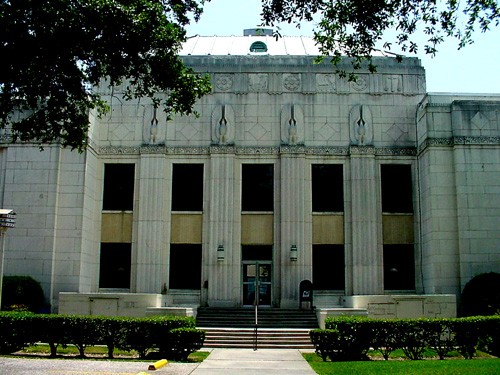
Port Arthur Sub Courthouse
TE Photo, May 2003

Port Arthur Sub Courthouse architectural detail - Moses relief
TE Photo, May 2003
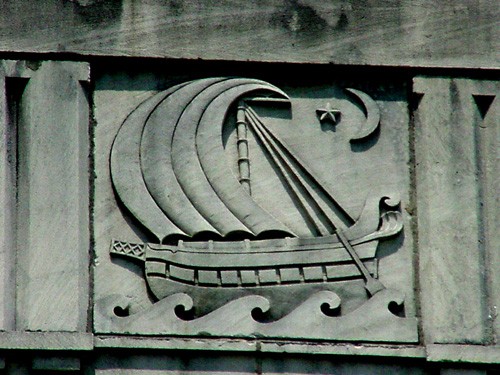
Port Arthur Sub Courthouse architectural detail - boat relief
TE Photo, May 2003

Port Arthur Sub Courthouse statue
TE Photo, May 2003
More Texas Statues
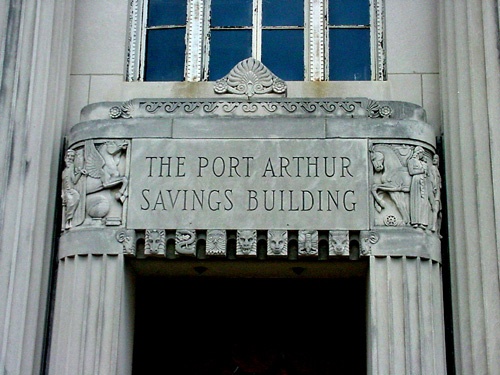
Port Arthur Savings Building Doorway
TE Photo, May 2003
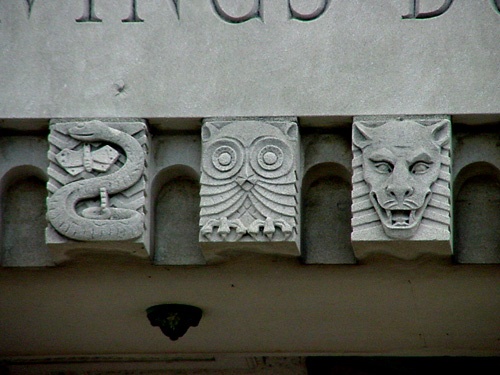
Port Arthur Savings Building Gargoyles
TE Photo, May 2003
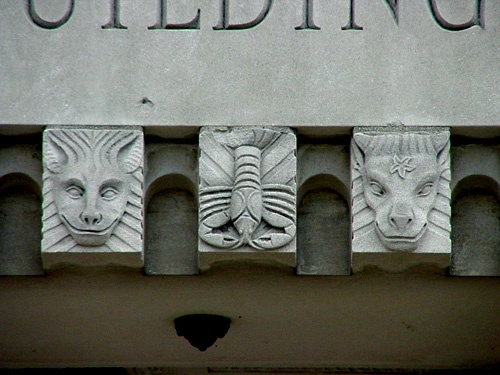
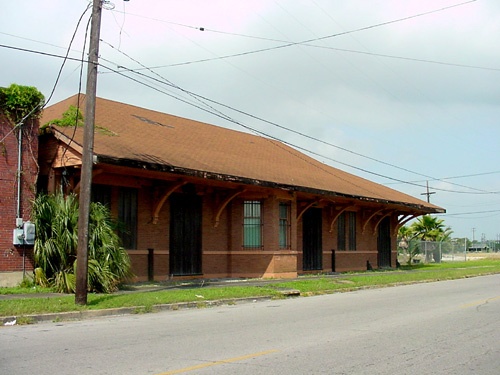
The Port Arthur Depot today is in use as a residence.
TE Photo, May 2003
More Texas Depots
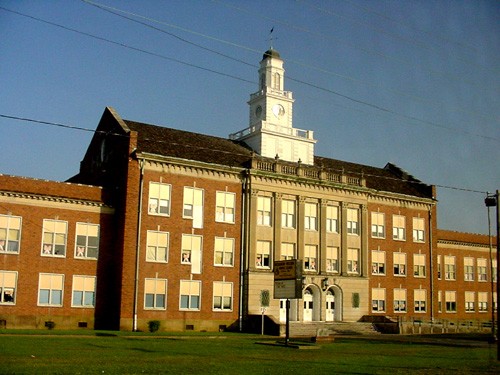
Port Arthur Kress Building
TE Photo, May 2003

A building in Port Arthur
TE Photo, May 2003
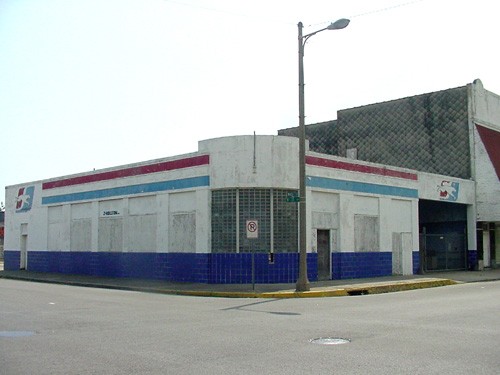
Port Arthur Greyhound Station
TE Photo, May 2003
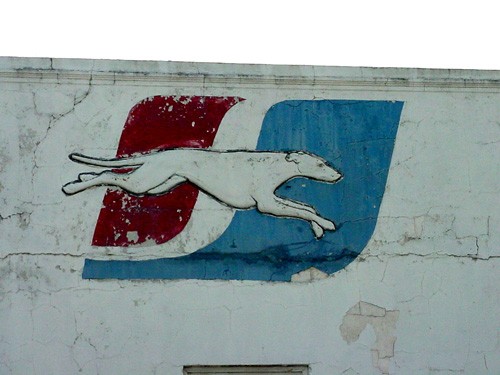
Port Arthur Greyhound Station
TE Photo, May 2003

Worker Silhouettes
TE Photo, May 2003
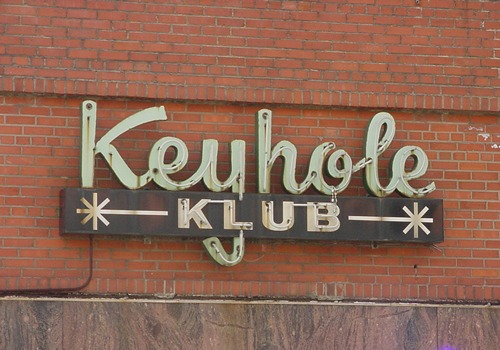

Three Sisters sidewalk sign
TE Photo, May 2003
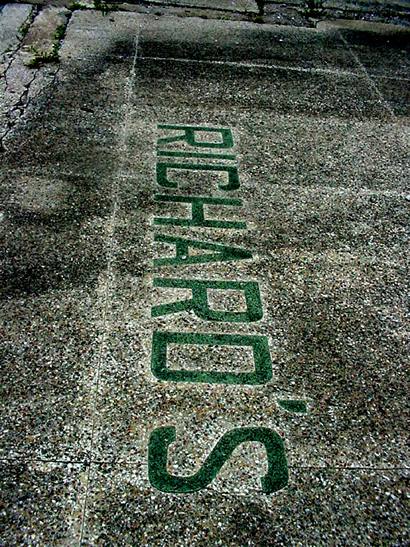
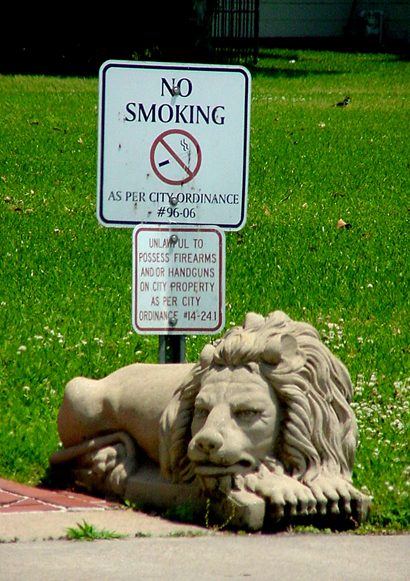
Unlawful to possess ...
TE Photo, May 2003
More Texas Signs
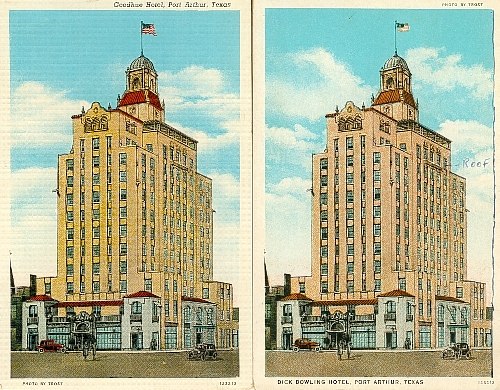
Goodhue Hotel, Dick Dowling Hotel
Old Postcard
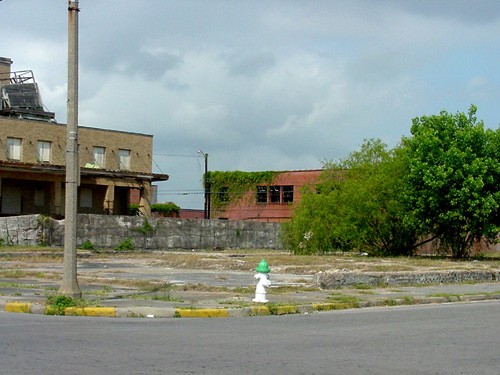
Former Goodhue Hotel site
TE Photo, May 2003
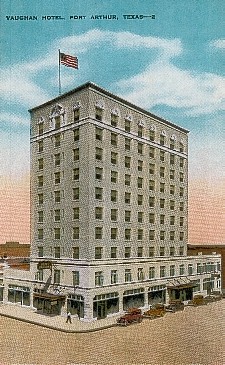
Vaugham Hotel
Old Postcard
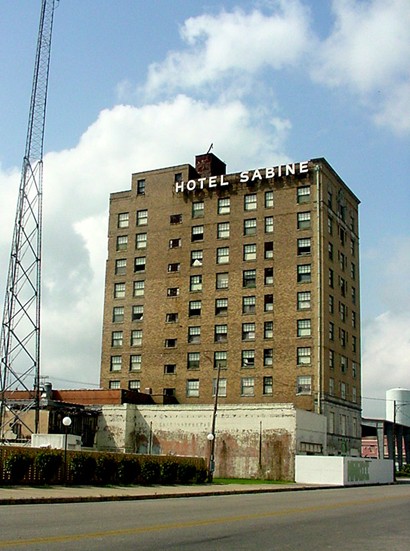
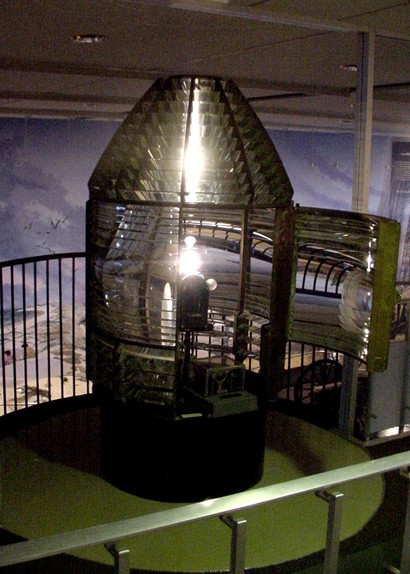
Lighthouse light displayed in museum
TE Photo, May 2003

1929 Eddingston Court
TE Photo, May 2003
L - A 1902 painting shows that Port Authurians had Business Priorities
R - A livery stable in early Port Arthur.
Photos courtesy Museum of the Gulf Coast
Sparks Settlement Cemetery
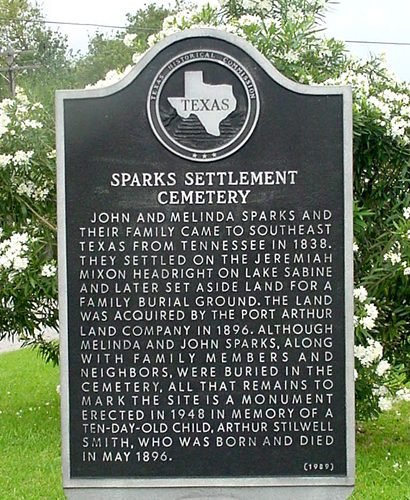
Sparks Settlement Cemetery Historical Marker
TE Photo, May 2003
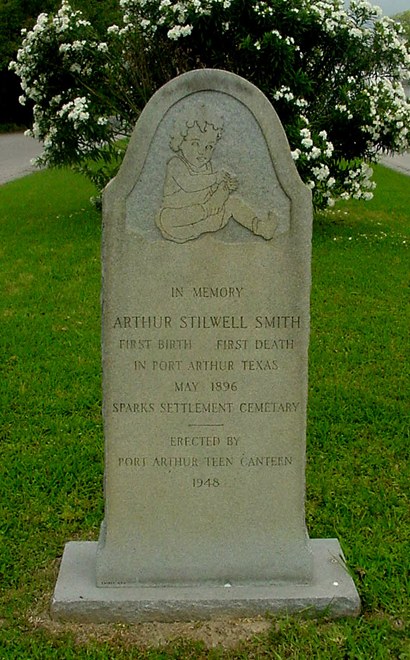
Baby Arthur Stilwell Smith Tombstone
TE Photo, May 2003

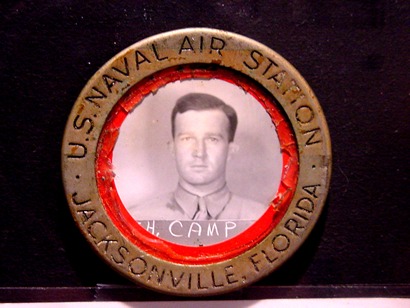
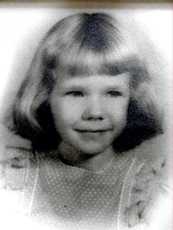 |
Janis Joplin Perhaps Port Arthur's most famous personality, Janis Joplin now has a memorabilia display in the Museum Photo courtesy Museum of the Gulf Coast |
|---|
Historical Marker: 4330, 32nd St., Port Arthur
Janis Lyn Joplin
(January 19, 1943 - October 4, 1970)
A native of Port Arthur, famed blues and rock and roll singer Janis Joplin lived here with her family. She graduated from Thomas Jefferson High School in 1960 and attended Port Arthur College and Lamar State College of Technology (Lamar University) in Beaumont.
A liberal and outspoken free spirit, Janis rebelled against the conservatism of her hometown, and in 1962 she moved to Austin to study art at the University of Texas. She connected to the burgeoning Austin music scene and began singing in clubs around town, most notably at Threadgill's, a bar operated by Texas country singer and yodeler Kenneth Threadgill. With her raw and raspy singing style exhibiting the blues, jazz, country, cajun, gospel and soul music influences of east Texas and Louisiana, she was a popular local performer.
Searching for wider acceptance, Joplin moved to San Francisco in 1963 and quickly became part of the growing folk music and counter-culture movement of the 1960s. Her performances at the 1967 International Pop and Jazz Festivals in Monterey brought her widespread recognition. Her first album, Cheap Thrills, with the band Big Brother and the Holding Company, was a wild success even as her personal life became marred with alcohol and drug abuse. Later recording with the Kosmic Blues Band and the Full-Tilt Boogie Band, she was an international sensation by the end of the decade. In August 1970, at the height of her fame, Joplin returned to Port Arthur for her ten-year high school reunion. Just two months later, she died of an accidental overdose of heroin and alcohol; her ashes were spread along the coast of northern California. Her final album, Pearl, released after her death, earned a gold record.
(2007)
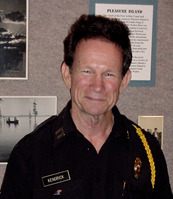 |
Captain Michael Kendrick TE Photo May 2003 |
|---|
Port Arthur Post Office Building
TE Photo, May 2003
Port Arthur Tourists Information
- The Port Arthur Chamber of Commerce
4749 Twin City Hwy, Suite 300
Port Arthur, TX 77642
(409) 963-1107 - The Port Arthur Convention & Visitor's Bureau
3401 Cultural Center Drive Port Arthur, TX 77642
1-800-235-7822
Website - http://www.portarthurtexas.com/
Anyone wishing to share photos of Port Arthur after flooding from hurricanes, please submit here
Texas Escapes, in its purpose to preserve historic, endangered and vanishing Texas, asks that anyone wishing to share their local history, stories, landmarks and recent or vintage photos, please contact us.
